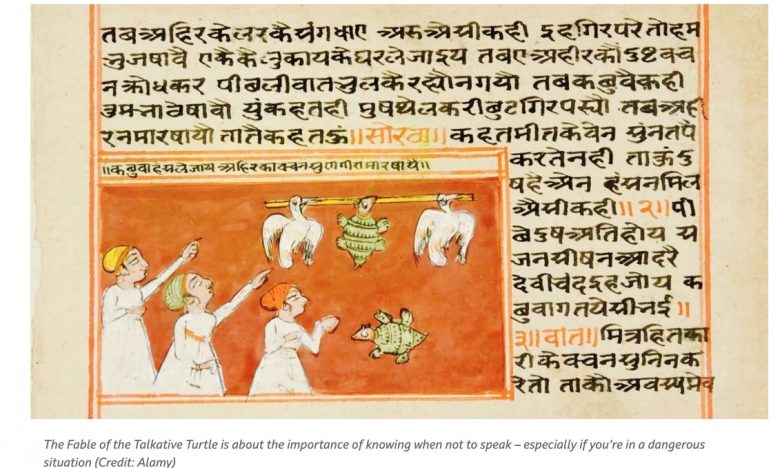INDIA, May 17, 2018 (BBC): In the first millennium, roughly 1,500 years ago, a pair of jackals began traveling around the world. They were known in India as Karataka and Damanaka, one wily and cunning, one noble and upright. They were the stars of one of the fabulous animal stories in a vast collection known as the Panchatantra. The tales from the Panchatantra, intended to teach princes statecraft, strategy, the pleasures and perils of friendships, moral conduct and lessons in power, have spread all around the world. What these ancient, linked stories carried was what our generation would call viral memes. The massively influential idea of frame stories, tales nested inside one another like Matryoshka dolls or measuring cups, influenced writers from Geoffrey Chaucer to Boccaccio. Equally powerful was the idea of talking animals, of the jungles and the forests as wild places that mirror the human struggle for power, justice and survival, which influenced the fabulist poetry of Jean de La Fontaine – and brings to mind Aesop’s Fables.
The tales spread through a colorful network of pilgrims, court emissaries, Crusaders, monks, scholars, soldiers, diplomats, traders and assorted travelers across the world. Scholars argue over who wrote – or collected – the tales of the Panchatantra, harvesting them from the collective consciousness of folk memory. Most scholars agree that the earliest collected Panchatantra – the original Sanskrit, now lost, has been reconstructed from other translations – was probably compiled by an octogenarian Brahmin named Vishnu Sharma in Kashmir, roughly between 350-400 CE. Another version, translated by Durgasimha into the Indian language Kannada in roughly 1025 CE, traveled across Asia. Since then, the Panchatantra has had more than 200 retellings in at least 50 non-Indian languages.
Much more on the Panchatantra at source.
https://www.bbc.com/culture/article/20180517-the-panchatantra-the-ancient-viral-memes-still-with-us
A daily summary of world news for Hindus and non-Hindus alike

